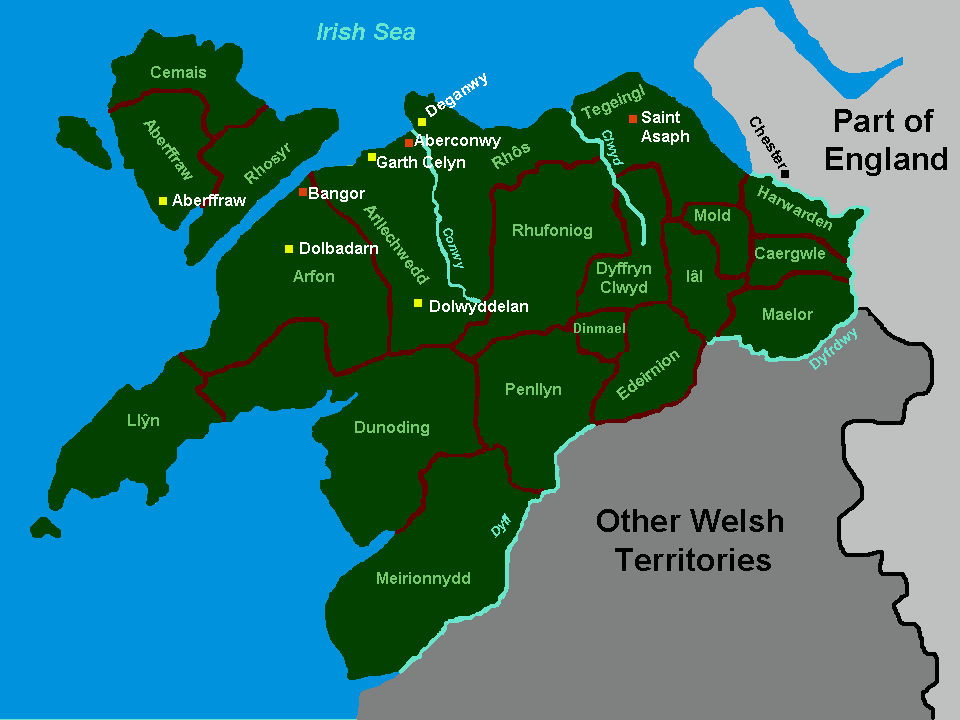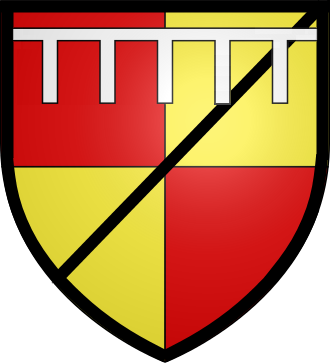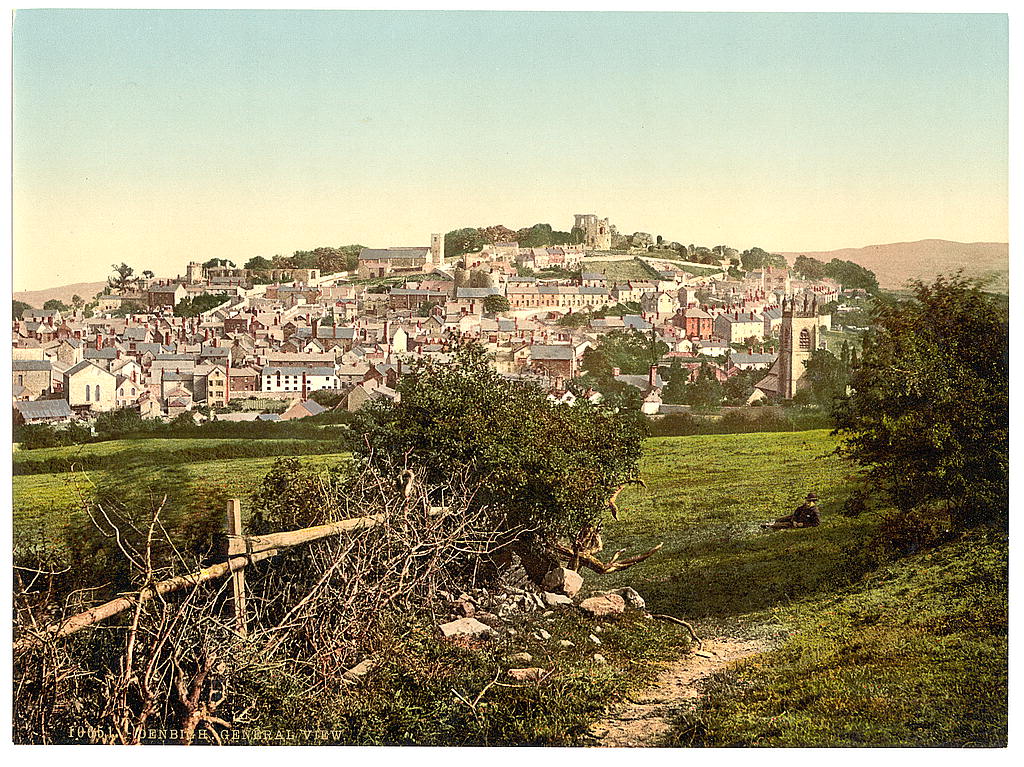|
Cantref Rhufoniog
{{coord, 52.950, -3.275, display=title, region:GB_scale:20000 Rhufoniog was a small sub-kingdom of the Dark Ages Gwynedd, and later a cantref in medieval Wales. Geography The cantref Rhos lay between it and the Irish Sea. Sometimes the two cantrefi were linked together as "Rhos and Rhufeiniog", which roughly corresponds to the territory of the old county of Denbighshire. The rivers Elwy, Clwyd and Clywedog formed a natural border to the north and east. As today, the countryside was bleak and isolated. There were three commotes in Rhufoniog, namely Upper Aled, Lower Aled and River Aled as a border between them, and the commote Ceinmerch (also known as 'Cymeirch' or 'Ystrad') in the north-east between the River Lliwen and the River Clywedog. History The early history of the cantref is unclear. According to tradition, it was ruled by its eponymous founder Rhufon, the third son of the first King of Gwynedd, Cunedda, and his direct descendants from the year 445 until ... [...More Info...] [...Related Items...] OR: [Wikipedia] [Google] [Baidu] |
Gwynedd General Map
Gwynedd (; ) is a county and preserved county (latter with differing boundaries; includes the Isle of Anglesey) in the north-west of Wales. It shares borders with Powys, Conwy County Borough, Denbighshire, Anglesey over the Menai Strait, and Ceredigion over the River Dyfi. The scenic Llŷn Peninsula and most of Snowdonia National Park are in Gwynedd. Bangor is the home of Bangor University. As a local government area, it is the second largest in Wales in terms of land area and also one of the most sparsely populated. A majority of the population is Welsh-speaking. ''Gwynedd'' also refers to being one of the preserved counties of Wales, covering the two local government areas of Gwynedd and Anglesey. Named after the old Kingdom of Gwynedd, both culturally and historically, ''Gwynedd'' can also be used for most of North Wales, such as the area that was policed by the Gwynedd Constabulary. The current area is , with a population of 121,874 as measured in the 2011 Census. ... [...More Info...] [...Related Items...] OR: [Wikipedia] [Google] [Baidu] |
Moreith Ap Aidan
Moreith ap Aidan was king of Rhufoniog {{coord, 52.950, -3.275, display=title, region:GB_scale:20000 Rhufoniog was a small sub-kingdom of the Dark Ages Gwynedd, and later a cantref in medieval Wales. Geography The cantref Rhos lay between it and the Irish Sea. Sometimes the t ... around 520. Nothing is known about his life, aside from rumour that he lived in Castle Greynus. 5th-century Welsh monarchs {{Wales-bio-stub fr:Moreith ap Aidan ... [...More Info...] [...Related Items...] OR: [Wikipedia] [Google] [Baidu] |
Conwy County Borough
Conwy County Borough ( cy, Bwrdeistref Sirol Conwy) is a county borough in Wales. It borders Gwynedd to the west and south, and Denbighshire to the east. Other settlements in the county borough include Abergele, Betws-y-Coed, Colwyn Bay, Conwy, Llandudno, Llandudno Junction, Llanfairfechan, Llanrwst, and Penmaenmawr. Geography The River Conwy, after which the county borough is named, lies wholly within the area: rising in Snowdonia and flowing through Llanrwst and Trefriw en route to the Irish Sea by Conwy. The river here marks the border between the historic counties of Caernarfonshire and Denbighshire. One third of the land area of the county borough lies in the Snowdonia National Park, and the council appoint three of the 18 members of the Snowdonia National Park Authority. Its total area is , making it slightly larger than Hong Kong. The eastern part includes the larger section of Denbigh Moors. The vast majority of the population live on the coast; the only settlement o ... [...More Info...] [...Related Items...] OR: [Wikipedia] [Google] [Baidu] |
Denbighshire
Denbighshire ( ; cy, Sir Ddinbych; ) is a county in the north-east of Wales. Its borders differ from the historic county of the same name. This part of Wales contains the country's oldest known evidence of habitation – Pontnewydd (Bontnewydd-Llanelwy) Palaeolithic site has Neanderthal remains of some 225,000 years ago. Castles include Denbigh, Rhuddlan, Rhyl, Prestatyn, Trefnant, Llangollen and Ruthin, Castell Dinas Bran, Bodelwyddan and St Asaph Cathedral. Denbighshire is bounded by coastline to the north and hills to the east, south and west. The River Clwyd follows a broad valley with little industry: crops appear in the Vale of Clwyd and cattle and sheep in the uplands. The coast attracts summer visitors; hikers frequent the Clwydian Range, part of the Clwydian Range and Dee Valley Area of Outstanding Natural Beauty. Llangollen International Musical Eisteddfod takes place each July. Formation The main area was formed on 1 April 1996 under the Local Government (Wale ... [...More Info...] [...Related Items...] OR: [Wikipedia] [Google] [Baidu] |
Lordship Of Denbigh
The Lordship of Denbigh was a marcher lordship in North Wales created by Edward I in 1284 and granted to the Earl of Lincoln. It was centred on the borough of Denbigh and Denbigh Castle. The lordship was held successively by several of England's most prominent aristocratic families in the 14th and 15th centuries. Title to the lordship was disputed for much of the second half of the 14th century between two powerful noble families: the Mortimer Earls of March and the Montagu Earls of Salisbury. Eventually, the lordship returned to the crown when Edward, Duke of York, who had inherited the lordship through his grandmother, acceded to the throne in 1461 as Edward IV. In 1563, Elizabeth I revived the lordship and granted it to her favourite Lord Robert Dudley, later becoming the Earl of Leicester. Leicester mortgaged it to raise money and the lordship was finally returned to the crown when Elizabeth redeemed the mortgage in 1592/3. The crown disposed of much of the lordship's lan ... [...More Info...] [...Related Items...] OR: [Wikipedia] [Google] [Baidu] |
Henry De Lacy, 3rd Earl Of Lincoln
Henry de Lacy, Earl of Lincoln (c. 1251February 1311), Baron of Pontefract, Lord of Bowland, Baron of Halton and hereditary Constable of Chester, was an English nobleman and confidant of King Edward I. He served Edward in Wales, France, and Scotland, both as a soldier and a diplomat. Through his mother he was a great-grandson of Amadeus IV, Count of Savoy. He is the addressee, or joint composer, of a poem (a ''tenson'') by Walter of Bibbesworth about crusading, ''La pleinte par entre missire Henry de Lacy et sire Wauter de Bybelesworthe pur la croiserie en la terre seinte''. Origins Henry was the son and heir of Edmund de Lacy, Baron of Pontefract (c. 1230–1258) (eldest son and heir apparent of John de Lacy, Earl of Lincoln (c. 1192–1240) and his wife Margaret de Quincy suo jure Countess of Lincoln (c. 1206–1266)) by his wife Alice of Saluzzo, a Savoyard noblewoman descended from Amadeus IV, Count of Savoy. Inheritance Henry's father died in 1258 when he was a young ... [...More Info...] [...Related Items...] OR: [Wikipedia] [Google] [Baidu] |
Dafydd Ap Gruffudd
Dafydd ap Gruffydd (11 July 1238 – 3 October 1283) was Prince of Wales from 11 December 1282 until his execution on 3 October 1283 on the orders of King Edward I of England. He was the last native Prince of Wales before the conquest of Wales by Edward I in 1283 and English rule in Wales that followed, until Owain Glyndŵr held the title during the Welsh Revolt of 1400–1415. Early life He was a prince of Gwynedd, a younger son of Gruffudd ap Llywelyn and his wife, Senena, and thus grandson of Llywelyn Fawr. In 1241, he is recorded as having been handed over to Henry III of England as a hostage with his younger brother, Rhodri, as part of an agreement. He may have come of age under Welsh law on 11 July 1252, on which date he issued, in front of his mother, Senena, and the Bishop of Bangor, a charter as lord of the commote of Cymydmaen, at the outer reaches of the Llŷn Peninsula. In 1253, he was called upon to pay homage to King Henry III of England. In 1255, he joined h ... [...More Info...] [...Related Items...] OR: [Wikipedia] [Google] [Baidu] |
Denbigh
Denbigh (; cy, Dinbych; ) is a market town and a community in Denbighshire, Wales. Formerly, the county town, the Welsh name translates to "Little Fortress"; a reference to its historic castle. Denbigh lies near the Clwydian Hills. History Denbigh Castle, together with its town walls, was built in 1282 by order of King Edward I. The Burgess Gate, whose twin towers adorn the symbol on Denbigh's civic seal, was once the main entrance into the town. The first borough charter was granted to Denbigh in 1290, when the town was still contained within the old town walls. It was the centre of the Marcher Lordship of Denbigh. The town was involved in the revolt of Madog ap Llywelyn in 1294–1295; the castle was captured in the autumn, and on 11 November 1294 a relieving force was defeated by the Welsh rebels. The town was recaptured by Edward I in December. Denbigh was also burnt in 1400 during the revolt of Owain Glyndŵr. During the Wars of the Roses (1455-1487), the town was ... [...More Info...] [...Related Items...] OR: [Wikipedia] [Google] [Baidu] |
Middle Ages
In the history of Europe, the Middle Ages or medieval period lasted approximately from the late 5th to the late 15th centuries, similar to the post-classical period of global history. It began with the fall of the Western Roman Empire and transitioned into the Renaissance and the Age of Discovery. The Middle Ages is the middle period of the three traditional divisions of Western history: classical antiquity, the medieval period, and the modern period. The medieval period is itself subdivided into the Early, High, and Late Middle Ages. Population decline, counterurbanisation, the collapse of centralized authority, invasions, and mass migrations of tribes, which had begun in late antiquity, continued into the Early Middle Ages. The large-scale movements of the Migration Period, including various Germanic peoples, formed new kingdoms in what remained of the Western Roman Empire. In the 7th century, North Africa and the Middle East—most recently part of the Eastern Ro ... [...More Info...] [...Related Items...] OR: [Wikipedia] [Google] [Baidu] |
Llanelwy
St Asaph (; cy, Llanelwy "church on the Elwy") is a city and community on the River Elwy in Denbighshire, Wales. In the 2011 Census it had a population of 3,355, making it the second-smallest city in Britain in terms of population and urban area. It is in the historic county of Flintshire. The city of St Asaph is surrounded by countryside and views of the Vale of Clwyd. It is situated close to a number of busy coastal towns such as Rhyl, Prestatyn, Abergele, Colwyn Bay and Llandudno. The historic castles of Denbigh and Rhuddlan are also nearby History The earliest inhabitants of the vale of Elwy lived at the nearby Paleolithic site of Pontnewydd (Bontnewydd), which was excavated from 1978 by a team from the University of Wales, led by Stephen Aldhouse Green. Teeth and part of a jawbone excavated in 1981 were dated to 225,000 years ago. This site is the most north-western site in Eurasia for remains of early hominids and is considered of international importance. Based ... [...More Info...] [...Related Items...] OR: [Wikipedia] [Google] [Baidu] |
Bangor, Gwynedd
Bangor (; ) is a cathedral city and community A community is a social unit (a group of living things) with commonality such as place, norms, religion, values, customs, or identity. Communities may share a sense of place situated in a given geographical area (e.g. a country, village, ... in Gwynedd, North Wales. It is the oldest city in Wales. Historic counties of Wales, Historically part of Caernarfonshire, it had a population of 18,322 in 2019, according to the Office for National Statistics. Landmarks include Bangor Cathedral, Bangor University, Garth Pier, and the Menai Suspension Bridge and Britannia Bridge which connect the city to the Anglesey, Isle of Anglesey. History The origins of the city date back to the founding of a monastic establishment on the site of Bangor Cathedral by the Celtic saint Deiniol in the early 6th century AD. itself is an old Welsh word for a wattled enclosure, such as the one that originally surrounded the cathedral site. Th ... [...More Info...] [...Related Items...] OR: [Wikipedia] [Google] [Baidu] |






